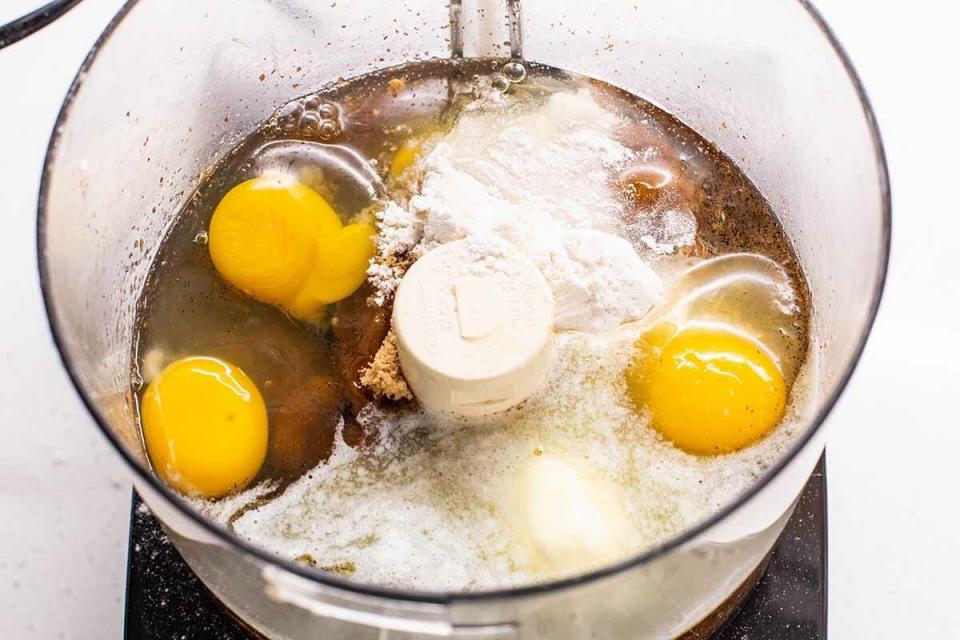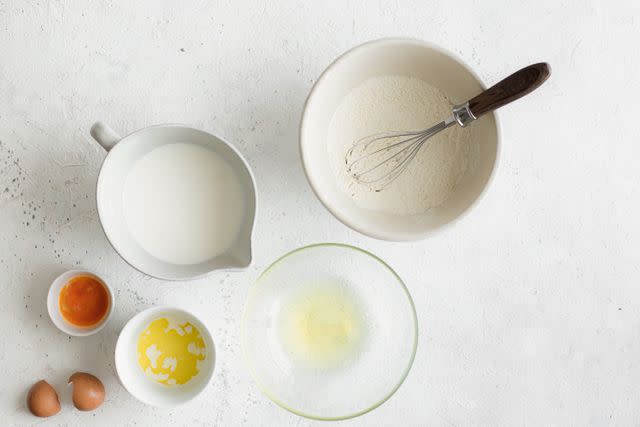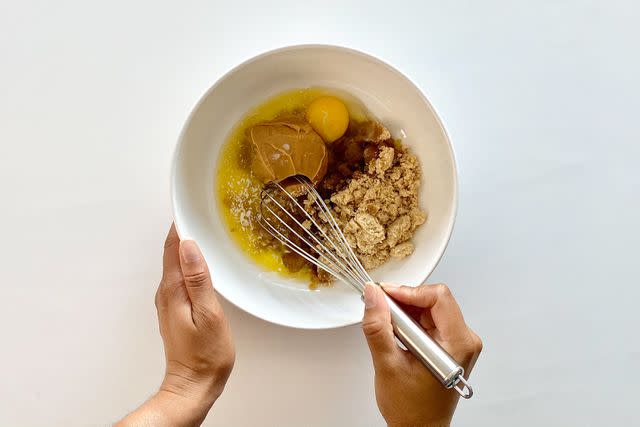Do Eggs Really Need To Be At Room Temperature For Baking?
It all depends on the type of recipe.

Whether you’re a budding baker or have years of experience, you’ve likely seen plenty of recipes call for room-temperature eggs. Maybe you’ve skipped this step because you forgot to take the eggs out of the fridge ahead of time. Or maybe you always adhere to the instructions. Either way, let's get to the bottom of why many baking recipes call for room-temperature eggs.
What’s the Reason For Room-Temperature Eggs?
Recipes that call for a creaming method are when solid fat (often butter) is beaten with sugar until lightened in texture. Adding cold eggs to that creamed mixture can influence the texture and consistency of final bake, especially when it’s a batter made with the creaming method. “Cold eggs cause the butter to harden,” says Olivia McCoy, trained pastry chef and head chef of Daily Chew in Atlanta.
Ingredients with different temperatures can be difficult to mix, create clumps, or even curdle the batter. “When you mix cold eggs into a mixture with high-fat content, such as butter, it will cause the fats to coagulate and clump up, and appear curdled,” says Norma Salazar, chef-instructor of Pastry & Baking Arts at the Institute of Culinary Education.
There's also a matter of volume. “Room temperature eggs whip up to a fuller consistency, and hold their shape better and for a longer amount of time,” Salazar continues. If the eggs are cold and don’t whip up as well, breads and cakes can be denser than intended.

Simply Recipes / Hannah Dela Cruz
When Are Room-Temperature Eggs Important?
Room-temperature eggs are important for many cake and cookie recipes. Light or fluffy cakes, such as angel food cake or sponge cake, need room-temperature eggs, says Yadira Stamp, chef and owner of Esencias Panameñas. “It is extremely important to use room temperature eggs because the eggs whip better, especially when whisking by hand, and it allows the cake to rise better, be fluffier, and be less dense,” she says.
If you don’t mind a denser cake and opt for cold eggs, expect a longer baking time. “The colder the batter, the longer the cook time,” says Stamp.
When Using Cold Eggs Is Fine
Baked good that are dense, not airy: McCoy explains that recipes that don’t rely on eggs for their creation of air—such as brownies, blondies, and muffins—allow you to use either cold or room temperature eggs.
Recipes with eggs first cooked on the stovetop: Egg temperature also isn’t important in recipes where eggs are heated simultaneously with other ingredients or the eggs aren’t whipped. “Any recipe that contains eggs and will be completely or partially cooked on the stovetop and then in the oven such as crème anglaise, flan, ice cream base, crème brûlée, or sabayon, for example,” says Salazar.

Simply Recipes / Kalisa Marie Martin
How Can You Tell When Eggs Are Room Temperature?
Egg Temperature
Room temperature typically ranges from 68° to 72° F (20° to 21°C).
Not sure if the eggs are ready to be mixed in? You can either crack an egg in a bowl and use a thermometer or do an unscientific check, Stamp says. “Make sure your hands are clean and touch the cracked egg with your fingertip; it should not feel cold,” she says. “It should be warm to the touch.”
McCoy offers up another reference point for what eggs that are still in the shell should feel like when you touch them. “The egg will feel as though you are touching someone else’s hand,” she says. “If it has a chill to it or makes your palm cold then it is not room temperature."
Read More: How to Bring Eggs to Room Temperature Fast

